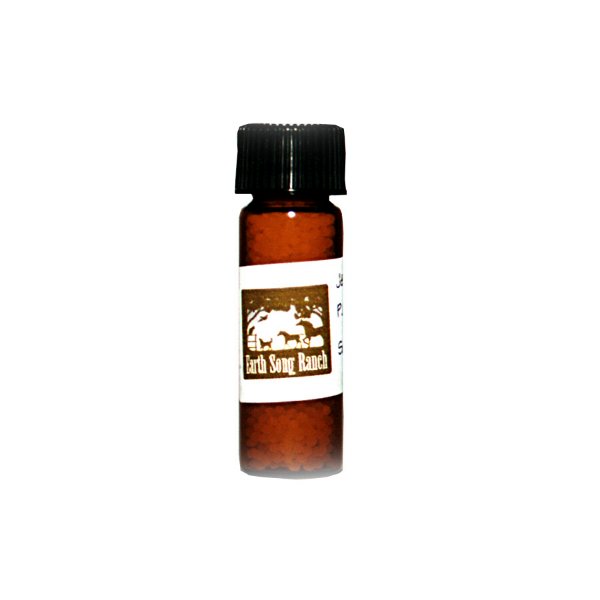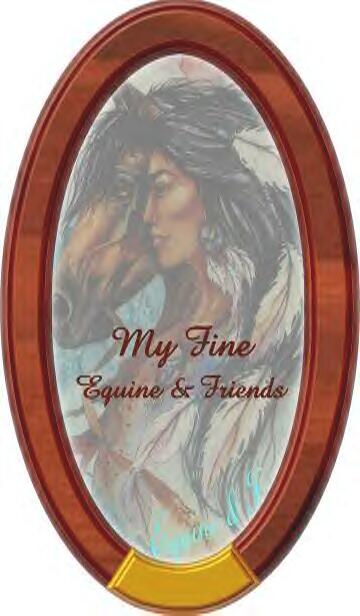
Horse, Dog, Cat, Nosodes
Equine Solutions Catalog Page 22a

NOSODES - by
(The Holistic Vet Clinic)
![]()
Herbal Wormer & Eye Health Support Herbs (Uveitis/Glaucoma)
Equine Equine-Zyme, Dog and Cat Equine-Zyme, Beta Glucan, Joint-Zyme, MSM, Glucosamine,
Mare, Foal, Stallion, Senior Zyme, Yeasture
for non-equine livestock,
Cushings, EPM, Hoof Builder, Tummy-Zymes
Pure Herbs and Herb Blends
Nosodes
![]()
Nosodes are Homeopathic Immunizations that are given in tiny sugar pill form,
monthly, that have no side effects, and are very effective in disease prevention.
all are 30C strength
See article below.

HORSES
1 dram bottles will last up to 5 horses 1 yr. 2 dram will last up to 10 horses 1. yr.
You can administer the little sugar pills between their lip and gums or you
can make a spray to spray on the gums. To build up the immune system,
Start out 1 time for 3 days in a row,
then 1 time per week for a month and then 1 time a month from there on to
maintain constant built up immune system.
If your horse, dog or cat already has an illness, we have homeopathic
protocols for them. Just email me to inquire: orders@myfineequine.com
Equine Potomac Fever 4 oz 1 dram $25.00 2 dram $45

Potomac Horse Fever
From Wikipedia, the free encyclopedia
Jump to: navigation, search
Potomac Horse Fever (PHF) is a febrile disease affecting horses. It is also known as Shasta River Crud and Equine
Monocytic Ehrlichiosis. It was first described in areas surrounding the Potomac River northwest of Washington,
D.C., in the 1980's, but cases have been described in many other parts of the United States, such as Minnesota,
California, and Pennsylvania.
Contents
1 Cause
2 Transmission
3 Symptoms
4 Diagnosis
5 Treatment
6 Prevention
7 References
Cause
The causative agent of PHF is Neorickettsia risticii (formerly Ehrlichia risticii), an intracellular rickettsial
bacterium.[1]
Transmission
The vector of Neorickettsia risticii is believed to be a trematode (fluke). The life cycle of the fluke takes it
through freshwater snails and back into water, where it is ingested by the larval stages of several aquatic insects,
including caddis flies and mayflies. It is thought that the main mode of infection is by accidental ingestion of
infected adult insects, who may fly into barns and die in stalls or on pastures after eclosure. Experimental infection
has been produced with oral administration of infected insects and subcutaneous inoculation of N. risticii. All
attempts to transmit the disease using ticks have failed. Several outbreaks of PHF have been found to coincide
with mass emergences of burrowing mayflies of the genus Hexagenia; these insects hatch en masse and may be found
littering the ground in nearby stables, where they are attracted by light. The entire natural history and life
cycle of N. risticii has yet to be elucidated, but bats and birds may be wild reservoirs of infection. Unlike other
causes of acute colitis in horses, such as Salmonella and Clostridium, PHF is not spread directly from horse to
horse.
Symptoms
Symptoms of PHF include fever; depression (sometimes profound); inappetance; mild, colic-like symptoms; decreased
manure production; profuse, watery, non-fetid diarrhea; endotoxemia; edema due to protein imbalances; and acute
laminitis and founder. Death may occur and is usually due to severe laminitis leading to founder.
Diagnosis
Diagnosis of PHF is accomplished by measuring antibody titers or PCR testing to look for the bacterium in the blood
and feces. However, most veterinarians opt to initiate treatment right away, as the disease can progress quite
quickly. Veterinarians may also run complete blood counts and chemistry and electrolyte panels to determine the
course of care. Radiographs may be taken to track the progress of laminitic horses.
Treatment
N. risticii responds well to tetracycline antibiotics. Mild cases may be treated with oral doxycycline, while severe
cases are usually treated with intravenous oxytetracycline. Supportive care for severe cases is aimed at minimizing
the effects of endotoxemia and preventing laminitis. This may include intravenous fluids and electrolytes; NSAIDs
such as Banamine (flunixin meglumine); intravenous dimethyl sulfoxide; administration of products such as Biosponge
or activated charcoal via nasogastric tube to bind endotoxins; polymyxin B or plasma for endotoxemia; supportive
shoeing; low doses of intramuscular acepromazine; and pentoxifylline.
Prevention
While a vaccine is available for PHF, it does not cover all strains of the bacterium, and recent vaccine failures
seem to be on the rise. Some veterinarians have started making recommendations for farm management to try to prevent
this disease:
Maintaining riparian barriers along bodies of water may encourage aquatic insects to stay near their places of
origin.
Turning off outside lights around the barn will prevent insects from being attracted.
Cleaning water buckets and feed areas frequently and keeping food covered will reduce the chance that the horse
will accidentally ingest infected insects.
References
^ Potomac Horse Fever. The Merck Veterinary Manual (2006). Retrieved on 2007-06-14.
Retrieved from "http://en.wikipedia.org/wiki/Potomac_Horse_Fever"
Categories: Horse diseases
Use the Navigation Bars for quick and easy access.

You can contact us by Snail Mail at: